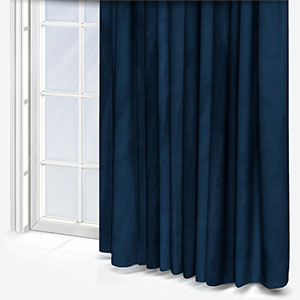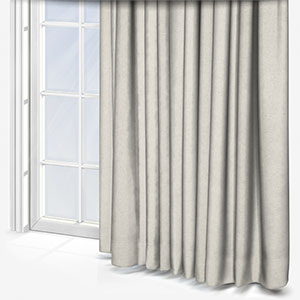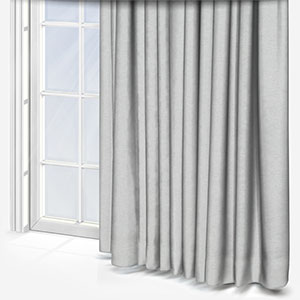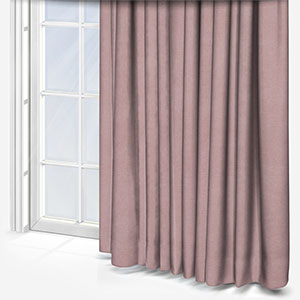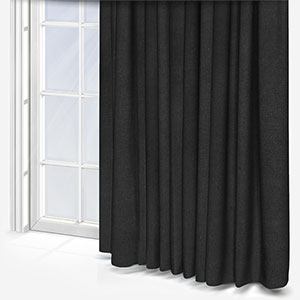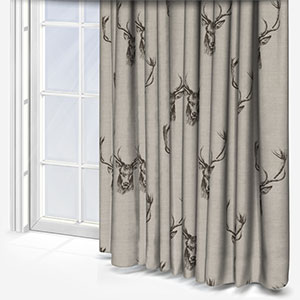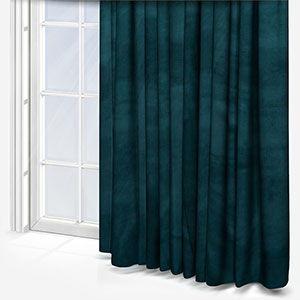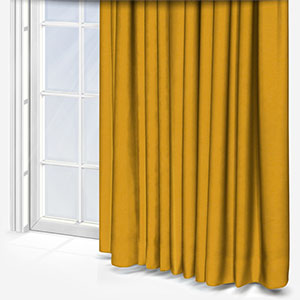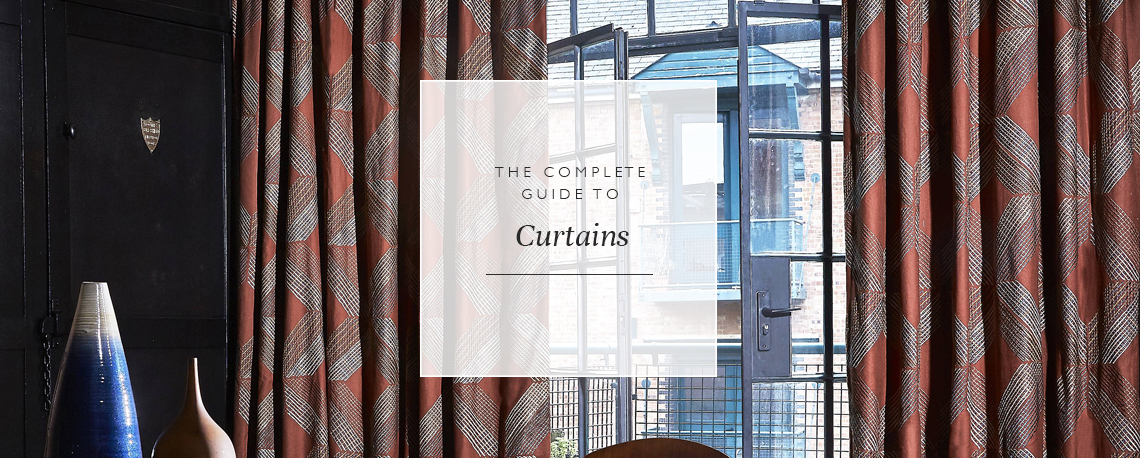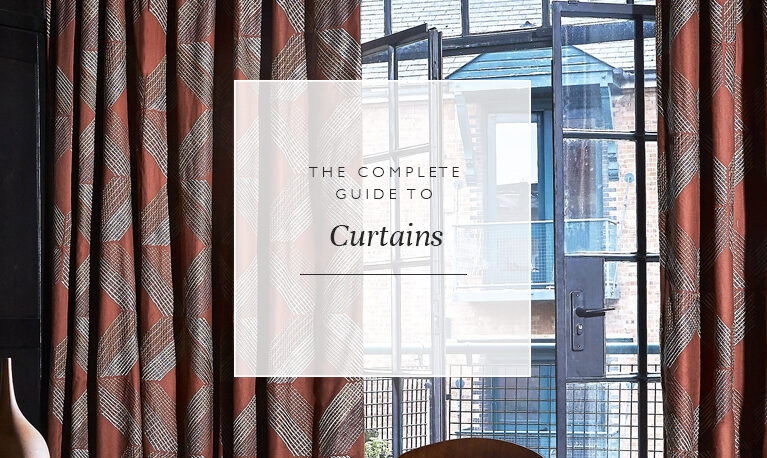
The Complete Guide To Different Types Of Curtains
At Blinds Direct, we’re renowned for our range of handmade to measure window dressings and homeware, all crafted in-house at our dedicated facility in the heart Yorkshire. Today, we’re going to explain everything you need to know about our made to measure curtains including our favourite curtain styles, how to measure for them, which fabric and lining to choose, and how you can keep them looking perfect for the long term…
Diferent curtain styles
There are many different styles of curtains, with different headers, colours, and patterns for you to consider. We’ll be exploring materials, linings, and headings below, but what about styling your curtains? Well, firstly you need to consider colour. From bold yellow and vibrant blues to soft neutrals and greys, we’ll have the perfect curtain for your home! Moreover, you can use the handy filter to quickly shop the different patterns we have too. In no time you’ll have your new stylish curtain ready to fit above your window.
How to measure for different types of curtains
How to measure for the width of your curtains
The easiest and most accurate way to measure for your new curtains is to measure the width of your curtain pole (if you don’t have a pole yet, you’ll need to measure across the inside of your recess and add an additional 30cm to this measurement). Make a note of this measurement.
Measuring the drop for different curtain types
Now it’s time to measure the drop. When measuring for the drop of eyelet or tab top curtains, you need to start measuring from the top of your pole. When measuring for pencil pleat, pinch pleat or wave curtains, you should measure from the top of the track, or the bottom of the curtain rings. The drop of your curtains can be any length you choose – they could be full length (hitting the floor), sitting below your windowsill, or sitting just above your radiator. It’s up to you!
It’s important to take this measurement three times; first, down from the left of your curtain pole, then down from the centre, and finally down from the right. You need to choose the smallest measurement as your final drop measurement.
Ready to order with your width and drop measurements
You should now have two measurements – the width, and the drop. These are the measurements you need to order your made to measure curtains and ensure a perfect fit. Of course, for further peace of mind, you can also add our Surefit Guarantee to your order, which means any incorrectly measured products will be replaced at no extra cost.
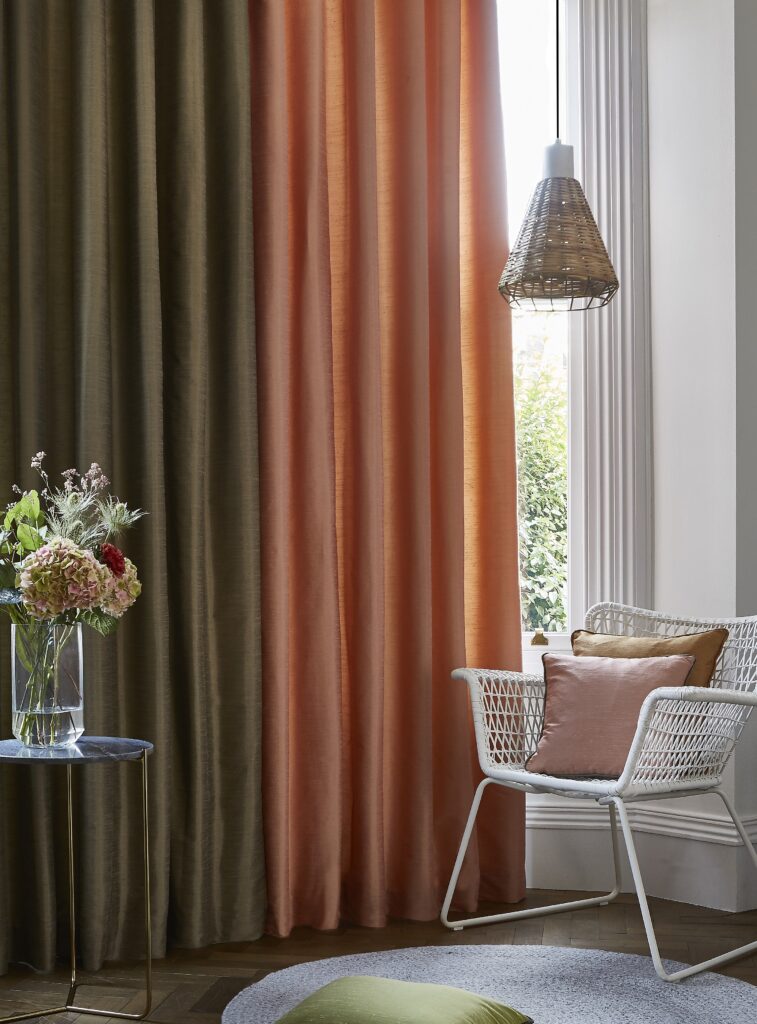
Which fabrics make beautiful curtains?
Velvet curtains
Velvet is one of the heaviest and most luxurious curtain fabrics. In terms of practicality, it is very thermally efficient and will help to keep out draughts, sounds and light. Velvet curtains also look very stylish and sumptuous, perfect for dining rooms, living rooms and the master bedroom.
Choose from a range of colours including the traditionally-chosen red, navy and jewel tones, or opt for something pale and chic such as blush, cream or light grey.
Linen curtains
Linen is a soft natural fabric that create a light and bright feeling in your space. This highly breathable fabric is perfect for the warmer seasons, keeping your home cool whilst still offering privacy and protection from unwanted bugs.
Linen curtains look beautiful in organic tones of cream, taupe or sage, but you could also choose a patterned linen to make more of a statement. The only downside of linen is that it wrinkles easily, but this can be rectified with a gentle steam or iron.
Wool curtains
Wool is another great insulator, making your room feel more warm and cosy. It’s also very affordable and perfect for a variety of areas in the home, particularly bedrooms, playrooms and living rooms. Wool curtains are easy to care for and offer a number of functional advantages, making them a very practical choice.
They’re also available in a wide range of colours and patterns to coordinate with your decor. Of course, it’s worth remembering that they shouldn’t be placed in moisture-prone rooms, as the fabric is prone to mould and mildew.
Silk curtains
Silk is a dreamy and delicate choice for your curtains, bringing a romantic look to your room. Choose from a range of shades which have a natural softness and shimmer, framing every window in a beautiful way.
Your silk curtains are also sure to hang perfectly, as the material is naturally resistant to creases.
The only downside of silk as a curtain fabric is that it’s more difficult to care for, requiring professional treatment in order to be protected look its best.
Voile curtains
Voiles, also known as sheer or net curtains, create a subtle and elegant window display. The advantages of voiles are a light level of privacy and light diffusing, without compromising on natural sunlight and fresh air.
Voiles are designed to look light and floaty, perfect for dressing your window alone, or layered upon a wooden, roller or Roman blind for additional style and versatility.
Voiles can be used in any room, on any sized window. They really come into their own when the weather is warm, providing a light shade and helping to diffuse the sun’s rays.
Eco friendly curtains
Eco friendly curtain fabric is the perfect choice for the environmentally conscious. But that doesn’t mean you need to compromise on style.
Our collection of recycled curtain fabrics features a number of beautiful colours, including versatile earthy tones and subtle glittering styles.
The fabric is made by chopping up used plastic bottles, melting and forming into flakes, which are then spun into yarn. Eco friendly curtains still provide an excellent level of light control and privacy, making them a practical and planet-friendly option for your home.
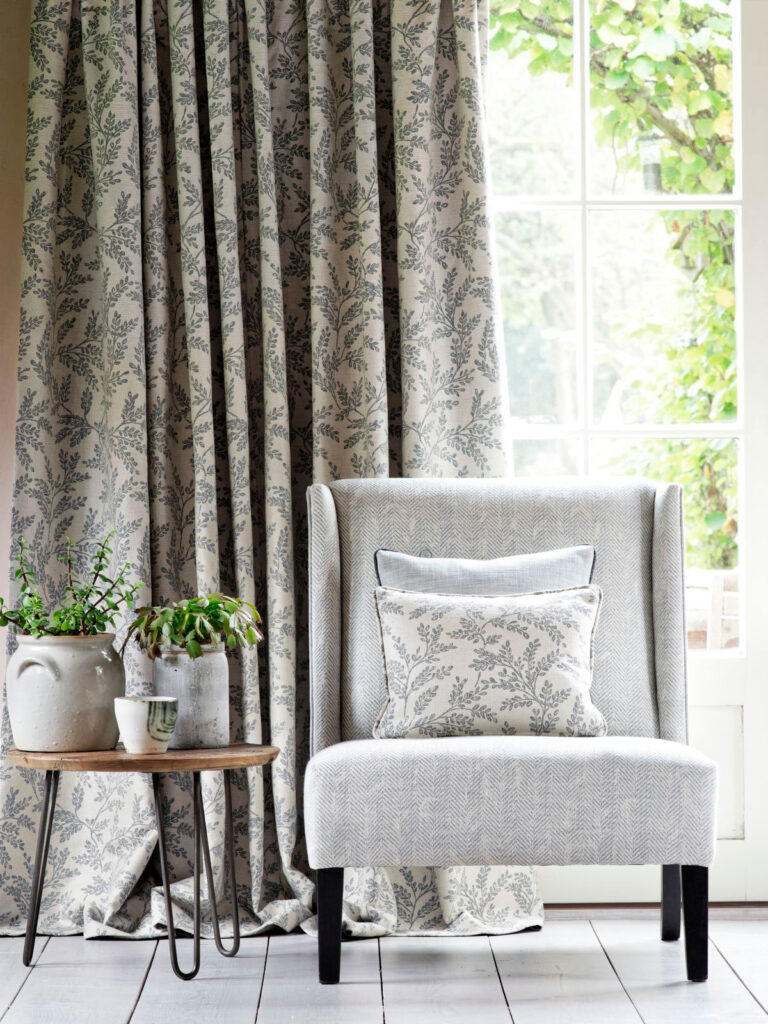
Linings and headings for curtains
Below we will show you everything you need to consider when selecting the best linings and headings for your curtains, and what the benefits of each type are.
What is the best lining for curtains?
Curtain lining not only brings additional functional benefits to your home, but it will add an extra fullness to help your curtains hang better. Choose from a range of lining options including premium lining, blackout lining, thermal lining and interlining, all of which offer their own advantages.
Premium lining for curtains
Premium lining comes as standard. It is made from a high quality cotton blend in a light ivory colour, adding extra thickness to your curtains whilst also improving insulation and durability.
Blackout lining for curtains
Blackout lining does what it says on the tin – the lining gives your curtains a blackout quality, which prevents any light from entering your room. This makes blackout lining the perfect choice for bedrooms and children’s rooms.
Thermal lining for curtains
Thermal lining is a great choice if you’re keen to make your home more thermally efficient. Keep the heat inside and avoid cranking up the thermostat with high quality thermal lining, ideal for living rooms, dining rooms and other family areas of the home.
Meanwhile, interlining is an extra layer of bonded material sandwiched between the curtain fabric and the outer lining, adding extra thermal efficiency, noise reduction and light control. For more information on this type of lining, you can read our curtains with thermal lining blog.
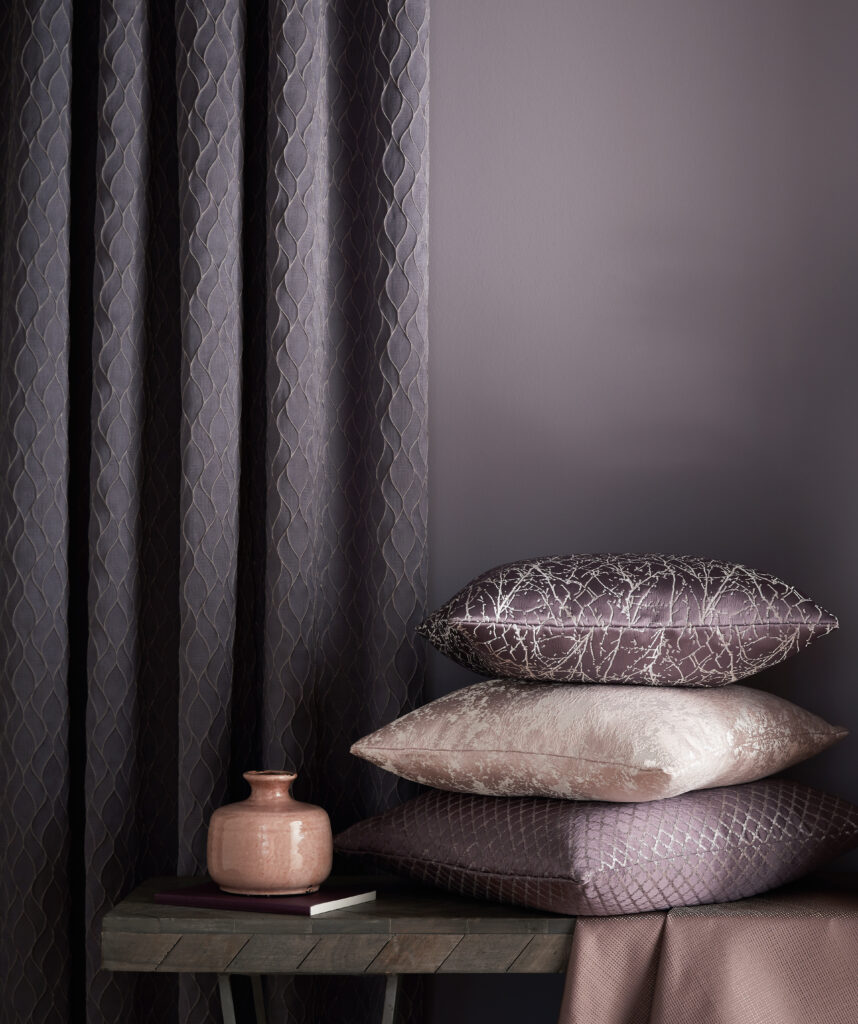
What are the different types of curtain headings?
Pencil pleat style on a curtain
With a pencil pleat heading, slim folds of fabric are gathered together, forming a neat pleated row. This is a lovely elegant finish, perfect for traditional interior styles. The pencil pleat is suitable for both poles and tracks.
What is a pinch pleat curtain?
A pinch pleat heading features small group gatherings along the fabric, which are sewn together. This creates a full and elegant finish, ideal for classically styled homes. Again, this heading works well on both curtain poles and tracks
An eyelet curtain heading
With an eyelet curtain heading, metal rings are added into your curtain fabric, providing holes for the curtain pole to slide through. This creates a consistent waved look and broad pleats. You can choose from a number of eyelet sizes depending on your taste and curtain pole diameter.
What is a tab top curtain?
Tab top curtains feature fabric loops at the top of the curtain. The curtain pole threads through these loops. A tab top heading is a modern choice, ideal for showcasing bold patterned curtains.
How to use wave pleat curtains
Our wave pleat headings are designed for a sleek, consistent, waved look. Your wave curtain needs to be paired with a surge curtain track, which manipulates the fabric into its pleats.
How to use ties and holdbacks for your curtains
The finishing touches are crucial when it comes to dressing your window with curtains. From the heading style, to the finials, to the tiebacks or holdbacks, it’s these little accents that can make a big difference to the look of your curtains.
Tiebacks
You could consider tiebacks that coordinate with your curtain fabric, creating a traditional and consistent look. Or you could go bold and choose a contrasting fabric, making a real style statement. Tassel tiebacks are another good idea, or if you prefer a more modern approach, why not try rope, ribbon or pompom tiebacks? Your tieback should be soft and flexible, wrapping neatly around your curtain to contain all fabric. It will generally featured a D ring on either end which hooks onto the wall.
Holdbacks
Alternatively, you use use holdbacks for your curtains. These are often made from metal and fixed directly to the wall, jutting out or curving around to secure the curtain fabric when they are open. Holdbacks are available in a variety of styles and colours, including sleek polished metal, rustic wood or quirky designs featuring animals, glass and crystals.
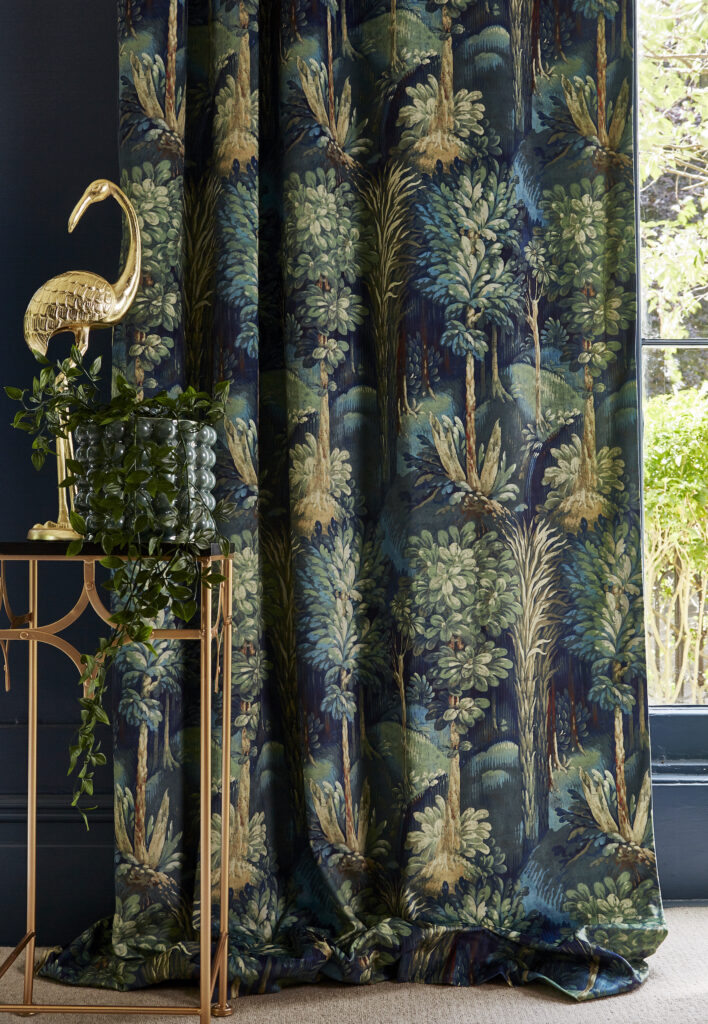
Tips for hanging different types of curtains
The way you’ll hang your curtains depends on the type of curtain you’ve chosen. You can make the whole process easier for yourself by asking someone to help you, especially if your curtain fabric is heavy.
Hanging pencil pleat curtains
If you’ve opted for pencil pleat curtains, you’ll need to be a little bit patient in order for them to look their best. Once you’ve double checked the size of your curtains against the window (they should be half the original width once the cords are gathered), secure the cords at one end and then pull gently to achieve a gathered effect.
Now attach your hooks and hang your curtains on the pole rings. Don’t forget to attach the final hook to a ring that’s placed between the bracket and the finial, preventing your curtains from pulling too far when closed.
Hanging pinch pleat curtains
Pinch pleat curtains are hung in a similar way. Identify where your hooks will be placed and then insert them carefully and evenly, making sure they go through all layers of fabric. Once all hooks are inserted, attach your curtains to the rings.
Hanging eyelet curtains
Eyelet curtains are much easier to hang. All you have to do is thread your curtains onto the pole. If you want crisper pleats, you could gather your curtains and secure with a soft piece of fabric, then leave overnight. You could also use a steamer to make your pleats more accentuated. Tab top curtains are also very easy to hang. Simply thread onto the pole, remembering to keep the final tab on the outside of the bracket, which will stop your curtain from pulling too far when closed.
Hanging wave curtains
If you’ve chosen wave curtains, they’ll be paired with one of our surge curtain tracks. This naturally manipulates the curtain fabric into even pleats, so you don’t need to gather any cords. All you need to do is place your hooks into the curtain fabric to achieve the size of wave you require, and then hook easily onto the track.
How to clean your curtains
The way you clean your curtains will depend on the type of fabric you’ve opted for. If the fabric is sturdy, you should be able to vacuum then, using a low setting and soft attachment to avoid damage to the fibres. If your curtain fabric is particularly delicate, such as silk or voile, it might be sensible to use a professional curtain cleaner instead.
Some sturdier curtains can be washed in the washing machine, but you should always use a cool temperature and slow spin setting. Never put your curtains in the tumble dryer – they’ll shrink!
Before you clean your curtains, you should remove any hardware that’s attached. You can then shake off any dirt and dust outside. Once they’re washed, try to leave them to dry naturally, which will help to retain the shape of the fabric.
You could also use a handheld steamer to clean your curtains. When using steam, work from the top to the bottom, keeping the steamer far enough away from the fabric so it doesn’t become wet. Never use steam on silk curtains!
Discover the perfect pair of curtains at Blinds Direct. Be sure to take a look at our full range of products, and if you have any further questions about curtains, please don’t hesitate to get in touch with our team – we’re always happy to help. You can also browse our browse our Curtains Buyers Guide for more information.
Shop some of our best selling curtains:
